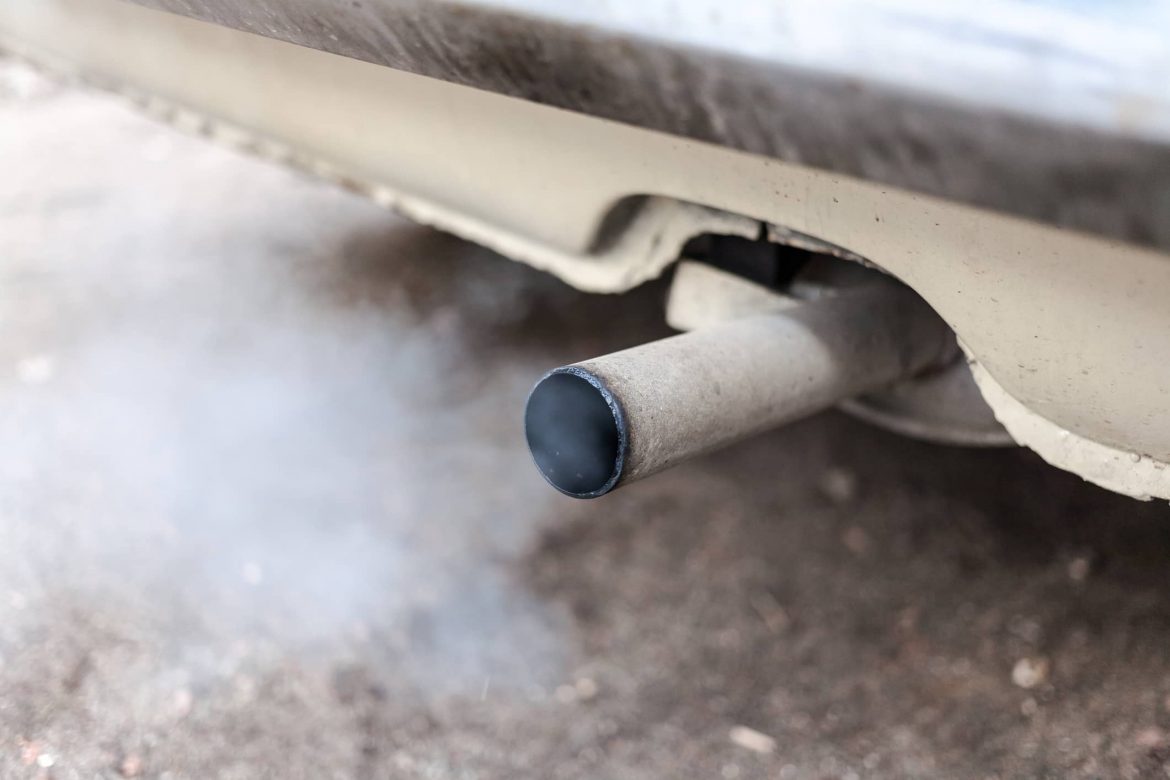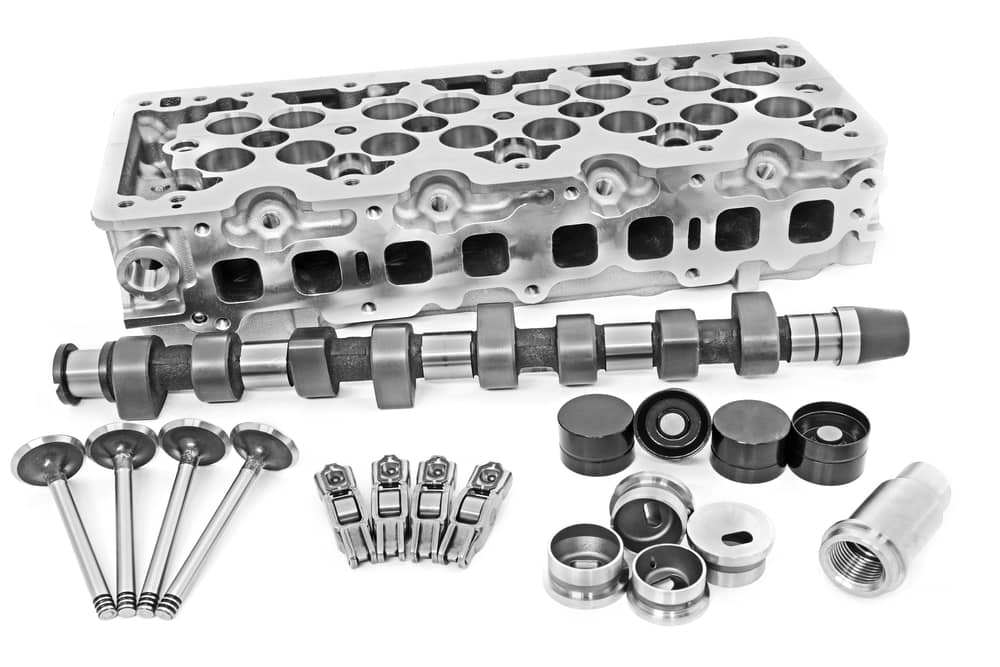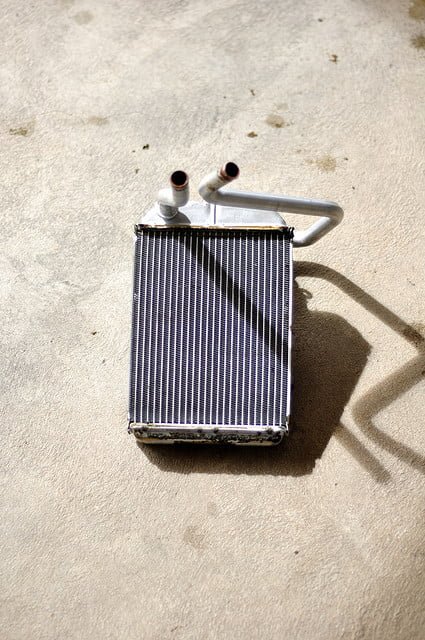When you see fluid coming from your car or truck, it is often an indication of a problem with the vehicle. It may be a minor drip that could go on indefinitely with little consequence, or an indication of a much larger problem that should be addressed immediately. Thus, it is important to determine what is leaking from your car before deciding when and how to act.
An automobile is a collection of closed systems that use fluids to create force, lubricate, facilitate combustion, cool and heat, and help the vehicle function. In every case, the fluid is designed to flow continuously through the system or become transformed into something else, like a gas. Other than windshield wiper fluid, which is not essential to the operation of a car or truck, none of the fluids should be exiting the vehicle in liquid form.
There are six main fluids in an automobile (not counting windshield wiper fluid or the coffee in your cup holder), none of which should be visible to its operator or passengers. They are motor oil, gasoline, brake fluid, transmission fluid, coolant and power steering fluid.
Let’s take a look at what a leak of each fluid looks like, the prognosis for trouble and prevention and repair options.
My Car Is Leaking Motor Oil
If there is one piece of maintenance any vehicle owner should do regularly to ensure the proper operation of their vehicle, it is changing the engine oil regularly, keeping it clean and the crankcase full.
Motor oil lubricates the mechanical parts of the engine that endure scorching temperatures, constant motion, immense friction and punishing wear and tear. Motor oil has the critical job of keeping these parts working continuously while the vehicle runs for the entirety of its operational life.
A dark brown or black puddle on the ground beneath the front end of a parked car suggests an oil leak. The exact location of the stain is not necessarily telling because oil can leak from various spots in the engine compartment or travel along a part before dripping to the ground.
Oil tends to be thicker than other fluids because it is designed to maintain its lubricating properties while withstanding extraordinarily high temperatures.
Confirming an oil leak is easy. Simply wait for the vehicle to cool off after driving and check the oil level using the oil dipstick in the crankcase. The dipstick is marked with minimum and maximum levels, so if the oil level is low, you likely have a leak.
Motor oil can also leak through the exhaust system. Bluish smoke indicates oil leaking from the combustion chamber. White smoke is a neon danger sign. It could indicate a variety of things, none of which are good.
Slow oil leaks can be alleviated by simply adding oil to the crankcase whenever needed, at least until the next oil change. This is wasteful and polluting since oil is dripping out of the vehicle and costs money to replace. But for a slow leak, it is a stopgap solution.
The dashboard oil light will come on when the oil pressure drops. If this happens regularly, it is time to find the leak and stop it.
There are two ways of addressing an oil leak. The preferred method is to take the vehicle to a car care professional, let them find the leak and repair it. The other is to purchase a chemical additive like BlueDevil Pro Universal Leak Repair and pour it into the oil compartment. Use one ounce for every quart of fluid capacity. The owner’s manual will indicate how much oil the crankcase holds. Be careful not to overfill the oil compartment.
After re-sealing the cap, start the engine and drive the vehicle. BlueDevil Pro Universal Leak Repair works by rejuvenating dried or worn seals and gaskets within an hour or two of driving. If the problem persists after 200 miles, a second application is recommended.
My Car Is Leaking Gas
A fuel leak presents itself to your eyes and nose. If the wet spot beneath your car smells like gasoline, it probably is. We all know what gas smells like because we pump it into our vehicles regularly. Regular and diesel gasoline on the ground both look clear or gold and may have a rainbow sheen as well.
If the puddle develops at the rear of the automobile, the problem is likely the gas tank. Gasoline can also leak from the gas cap, fuel lines or filter, broken or loose spark plugs, fuel injectors, gaskets, o-ring connectors, and other sources.
A slow gas leak will reduce gas mileage and foul the environment, but it is not a danger to the vehicle’s operation or its occupants. Gasoline in liquid form is not combustible. However, if the smell of gasoline is present without a fluid leak, bring the car in for service or trace the leak yourself immediately. Gas is combustible and dangerous if it gets near the engine and its fire-breathing spark plugs.
My Car Is Leaking Coolant
Coolant is the 50/50 mix of antifreeze and water that runs through the radiator and around the cooling system to regulate engine temperatures. Without coolant, the engine would burn up. To avoid this unfortunate turn of events, change the coolant every 50,000 miles, do regular maintenance on it in between, and make sure your car isn’t leaking sweet-smelling orange fluid. (The leak might also be yellow, green or pink.)
The fact that your car is leaking antifreeze can be corroborated by checking the fluid level in the radiator once the engine has cooled. If the coolant level has dropped below full, add some coolant to the radiator.
The sources of a coolant leak include cracked and damaged hoses and hose connections. Adding BlueDevil Coolant Stop Leakwill help stop the loss of antifreeze and keep the vehicle in safe operating condition, sealing leaks permanently, guaranteed.
With the engine cooled all the way down, remove the radiator cap and turn up the heater all the way before adding Coolant Stop Leak. Secure the cap and allow the engine to run for 45 minutes before shutting it off and leaving it to cool for an hour. Coolant may have to be added if the level is low.
If the leak persists, it may be components other than seals that are responsible. The leak should be traced and repaired immediately before damage is done to the engine.
My Car Is Leaking Brake Fluid
Brake fluid makes it possible for automobiles to stop. Braking systems are hydraulic, which means they use the compression of fluid to clamp brake rotors to the wheels. Leaking brake fluid can result in a crash if the amount of fluid is allowed to get sufficiently low.
If your car is leaking stinky yellowish-brown fluid near a wheel, it is coming from the braking system, most often the brake lines. (This is also true if your car is leaking clear fluid in the same area.) An inspection of the lines and the brake fluid reservoir’s fluid levels will help locate the source of the leak.
As with other leaks, if a brake fluid leak is slow, fluid can be added periodically to maintain levels and keep the braking system functioning. As with other leaks, this method is wasteful and not very green, and should be used only as a stopgap.
Leaking brake fluid is not subject to repair by fluid additives. The source of the leak must be repaired. A wide variety of problems may be leading to a leak, including a faulty master brake cylinder or worn brake caliper pistons. This is a repair job for veteran DIYers and car care professionals.
My Car Is Leaking Transmission Fluid
Transmission fluid cools and lubricates the transmission, the most expensive part of a car besides the engine. Losing this fluid can shut down the transmission and limit vehicle operation to a single gear. A transmission fluid leak should be repaired immediately.
A telltale sign of an automatic transmission fluid leak is red, crimson or dark orange droplets beneath the transmission – around the middle of the vehicle. Manual transmission fluid is more amber-colored.
Transmission fluid leaks are most commonly caused by a worn-out gasket in the fluid reservoir. BlueDevil Transmission Sealer permanently restores gaskets and seals fluid leaks in your transmission if you are unable to do a hard-part repair. With the engine off, pour BlueDevil Transmission Sealer into the transmission (one ounce per quart of fluid) and drive the vehicle until the leaks are sealed. This could take up to two days of drive time.
Other causes include a faulty transmission cooler line and a cracked transmission housing. Identifying the exact source of the leak can be difficult because it requires applying either black light or talcum powder to the transmission parts. The faulty parts will then need to be replaced.
Power Steering Fluid Is Leaking
During the automobile’s first half century, brute strength was required to turn the steering wheel. Modern cars provide a power assist to drivers in the form of power steering, making steering a breeze.
The compression of liquid provides the power in power steering, so fluid loss is a critical issue. The signs of a leak are thin reddish or light-brown liquid beneath the engine and difficulty turning the wheel. Small amounts of fluid loss can be replaced by finding the dipstick or reservoir and replenishing the supply.
One way to solve persistent seal leaks is with BlueDevil Power Steering Stop Leak. With the engine off, pour a third of a bottle into the power steering reservoir. Drive the car for an hour or two until the leak has sealed. If the leak continues, a second application may be required.
Take Care of All Car Leaks
Liquids help cars go, stop, turn, and avoid the graveyard. It’s a good idea to keep them clean, topped off and where they belong. A leak is a sign of trouble, so take care of it, and fluids will take care of your car.
BlueDevil Products can be found at AutoZone, Advance Auto Parts, O’Reilly Auto Parts, NAPA, Parts Authority, Auto Value, Bumper to Bumper and other major auto parts retailers.
BlueDevil Products can be found on Amazon.com or at AutoZone, Advance Auto Parts, O’Reilly Auto Parts, NAPA, and other major auto parts retailers.
Related Articles



